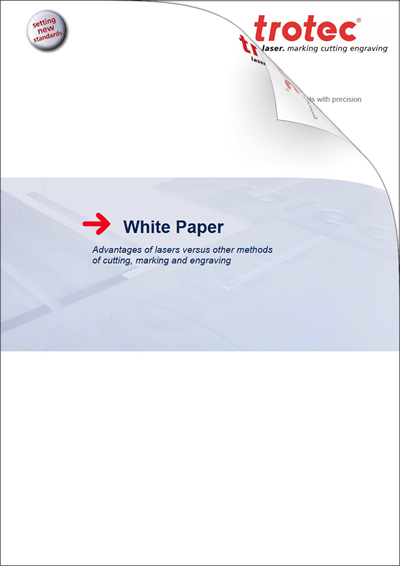 Trotec Laser Inc., Canton, Mich., discusses the "Advantages of lasers versus other methods of cutting, marking and engraving" in a white paper available through the company's website.
Trotec Laser Inc., Canton, Mich., discusses the "Advantages of lasers versus other methods of cutting, marking and engraving" in a white paper available through the company's website.
The target audience for the white paper: companies that use traditional methods of cutting, marking and engraving, such as inkjet systems, embossing, mechanical stamping, etching, printing, mechanical engraving, knife cutter or CNC routing.
"If you are using any of the methods above," according to the white paper, "you may be missing a valuable opportunity to increase quality and efficiency, and broaden product offerings."
Among the advantages of lasers addressed in the white paper are:
- the ability to use one system for all shapes, graphics and materials,
- easy handling,
- environmentally friendly,
- non-contact material processing
- high precision and repeatable accuracy.
Download the white paper here.
Contact Details
Related Glossary Terms
- computer numerical control ( CNC)
computer numerical control ( CNC)
Microprocessor-based controller dedicated to a machine tool that permits the creation or modification of parts. Programmed numerical control activates the machine’s servos and spindle drives and controls the various machining operations. See DNC, direct numerical control; NC, numerical control.
